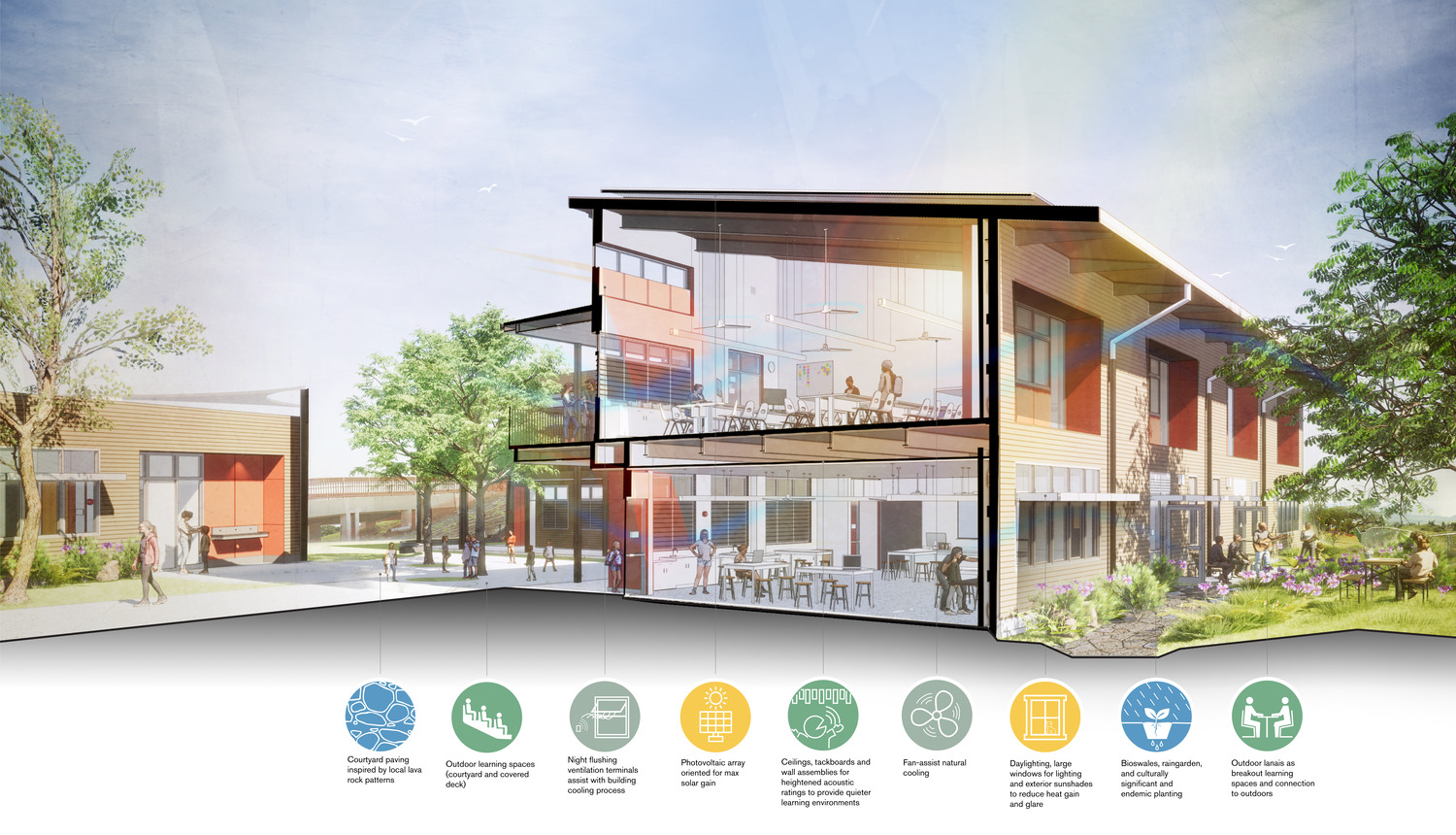Lāhainā Noon – Beyond a Shadow
At all times, there is a single point on Earth that is closest in distance to the sun, where the sun is directly overhead and its rays strike the earth’s surface exactly perpendicular. This subsolar point traverses the globe every day and produces the eerie effect of stripping objects of their cast shadows. Hawai’i refers to this tropical solar phenomenon as Lāhainā Noon and celebrates the event twice a year, occurring before and after the summer solstice.
Solar radiation is in part a function of the angle of incidence, or the angle the sun’s rays strike the Earth. When the summer sun reaches 90 degrees overhead, sunrays travel the shortest distance possible through the atmosphere before striking the Earth’s surface and are consequently extreme. This is contrasted to a winter sun that does not rise as high in the sky and its rays travel a greater distance through the planet’s atmosphere before striking the Earth—greatly reducing the intensity of solar radiation.

Lāhainā Noon occurs only in the tropics, the range of latitudes located between the Tropics of Cancer and Capricorn, and the force of the solar event is important for designers to consider. In the period between the two Lāhainā Noon events, the sun’s path over-rotates beyond perpendicular to a peak at 93 degrees—in other words, the sun is able to travel into the northern sky in the tropics. This unique solar geometry challenges our conventional understanding of building exposures and their relationships to the procession of the sun. As a result, shading in Hawai’i must also be considered on northern building exposures, as the sun has the potential to strike northern facades for a few weeks each year.

Traditional Hawaiian architecture accounts for this phenomenon through a number of architectural interventions that serve as a model for contemporary, sustainable building strategies. Simple post-and-beam structures promote natural ventilation while large overhanging roofs on all sides shield living spaces from harsh noontime light and direct solar exposure. The variant sun exposures—depending on orientation—require different overhang lengths: wider on the south side, and shorter on the north.

Lāhainā Noon will pass over the new Waikoloa Middle School Classroom Building on the west side of the Big Island on May 18, July 24, and 25. The roof pitch and materiality mitigates Hawai’i’s high sun exposure. In Hawai’i year long summer weather the heavily insulated roofing material and light colors will reduce heat gains, critical to decreasing energy requirements. Waikoloa is a naturally ventilated building with thin-open walls and generous window to wall ratios to permit daylighting and cooling trade winds in while easing energy loads. Waikoloa is the first ground-up project from our Honolulu Studio.

The name Lāhainā Noon was adopted in recent memory and means ‘cruel sun’—referencing the strength and direct angle of the sun’s rays. The Ancient Hawaiian name, kau ka lā i ka lolo, offers a similar interpretation when translated as the ‘sun rests on the brains’. Traditional Hawaiian beliefs suggest that this event spurs the aka (shadow) to retreat into one’s body, producing a time of great energy.
Understanding and managing the unique influence of the tropical sun on buildings and occupant comfort is essential to the design of successful spaces in the Tropics, and Lāhainā Noon plays an integral part in this story. The rich Hawaiian history that acknowledges and considers this curious solar event offers contemporary designers the opportunity to call forward traditional building practices while mitigating the sun’s intensity and telling the very story of this phenomenon.
This year Hawai’i will experience the Lāhainā Noon on:
May 2023 Lāhainā Noon Dates:
- Honolulu (O‘ahu): 12:28 PM (May 26+27)
- Kahului (Maui): 12:22 PM (May 24)
- Līhuʻe (Kauai): 12:35 PM (May 31)
- Hilo: 12:16 PM (May 18)
- Kona: 12:20 PM (May 18)
July 2023 Lāhainā Noon Dates:
- Honolulu (O‘ahu): 12:37 PM (July 15 + 16)
- Kahului (Maui): 12:32 PM (July 18)
- Līhuʻe (Kauai): 12:43 (July 11)
- Hilo: 12:26 PM (July 24)
- Kona: 12:30 PM (July 24+25)
